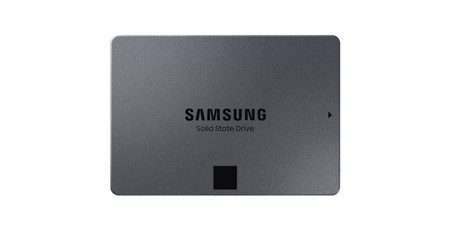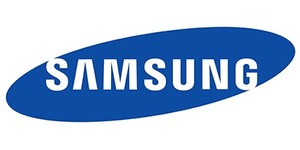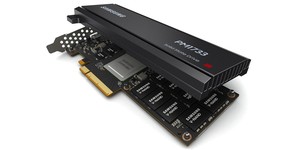
Samsung has announced volume production of its sixth-generation V-NAND 3D flash technology, boasting to be the first to market with a single-stack die boasting over a hundred layers.
The struggles of keeping up with Moore's Law, the historical observation turned slavishly-obeyed cast-iron rule that the number of transistors on a leading-edge semiconductor part trends towards a doubling every 18 months, has given manufacturers cause to look outside the traditional planar semiconductor layout and into three-dimensional stacks. Samsung isn't alone in taking just such an approach, but its V-NAND 3D NAND flash technology has claimed a new milestone: The first 3D NAND flash product to enter volume production with more than a hundred layers.
Hitting volume just 13 months after its fifth-generation equivalent - four months shorter than the company's usual cycle - the new sixth-generation V-NAND uses the company's in-house channel hole etching technology to pack 40 percent more cells into a single chip - bringing the total number of layers from 90-odd up to 136, in its initial incarnation. The tendency for tall stacks to fall to errors and increased latencies, meanwhile, is compensated by a new circuit design which improves performance by 10 percent and power consumption by 15 percent without increasing the error rate.
'By bringing cutting-edge 3D memory technology to volume production, we are able to introduce timely memory lineups that significantly raise the bar for speed and power efficiency, claims Kye Hyun Kyung, executive vice president of Solution Product & Development at Samsung Electronics. 'With faster development cycles for next-generation V-NAND products, we plan to rapidly expand the markets for our high-speed, high-capacity 512Gb V-NAND-based solutions.'
Samsung is bringing 256Gb sixth-generation V-NAND parts to the market in a 250GB SSD to start, with three-bit per cell 512Gb parts to land in the second half of the year. These will be followed, the company claims, by parts with over 300 layers - produced, simply enough, by mounting three of the sixth-generation 136-layer stacks together.
Commercial pricing and availability to end users has not yet been confirmed.

MSI MPG Velox 100R Chassis Review
October 14 2021 | 15:04








Want to comment? Please log in.